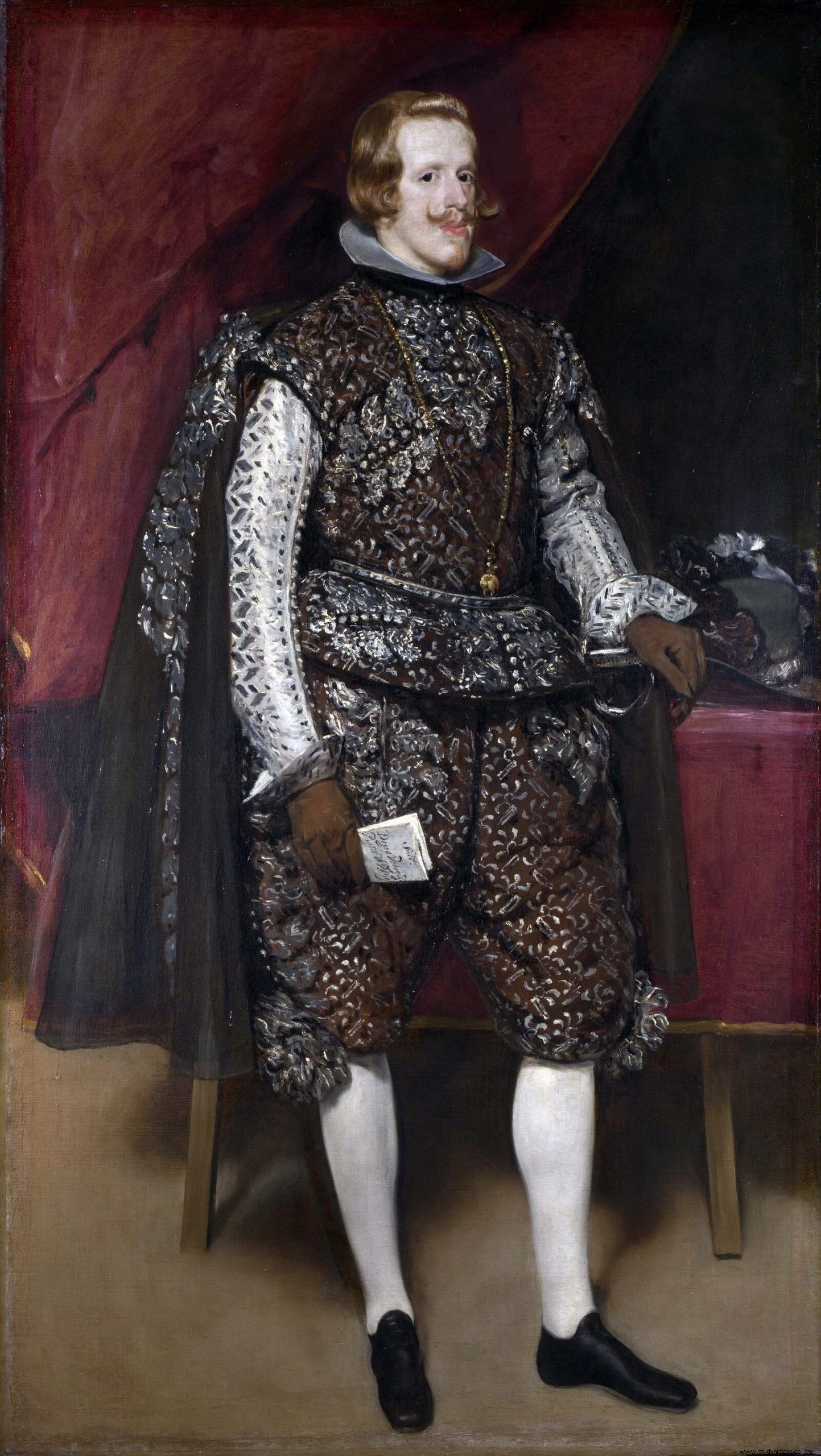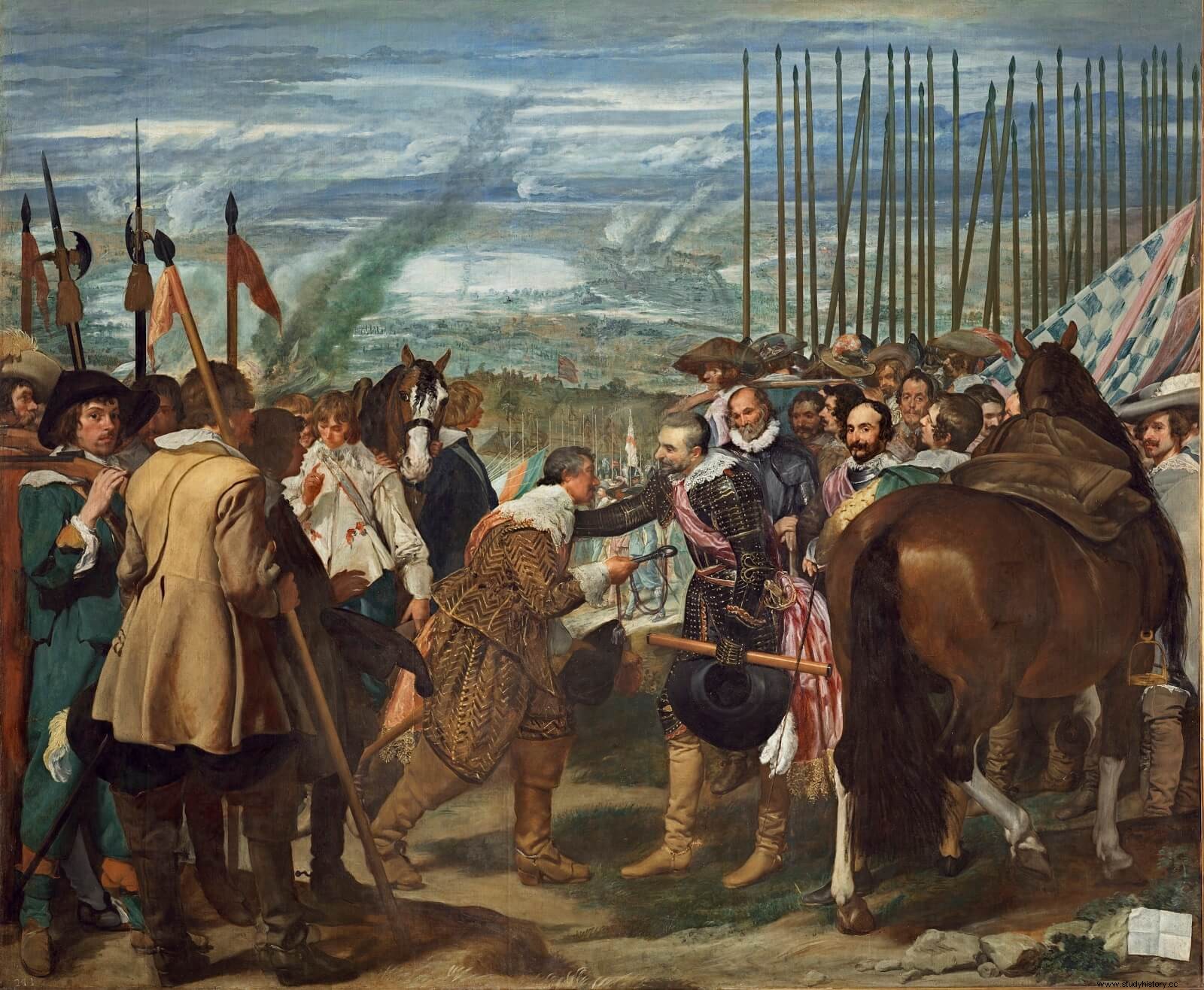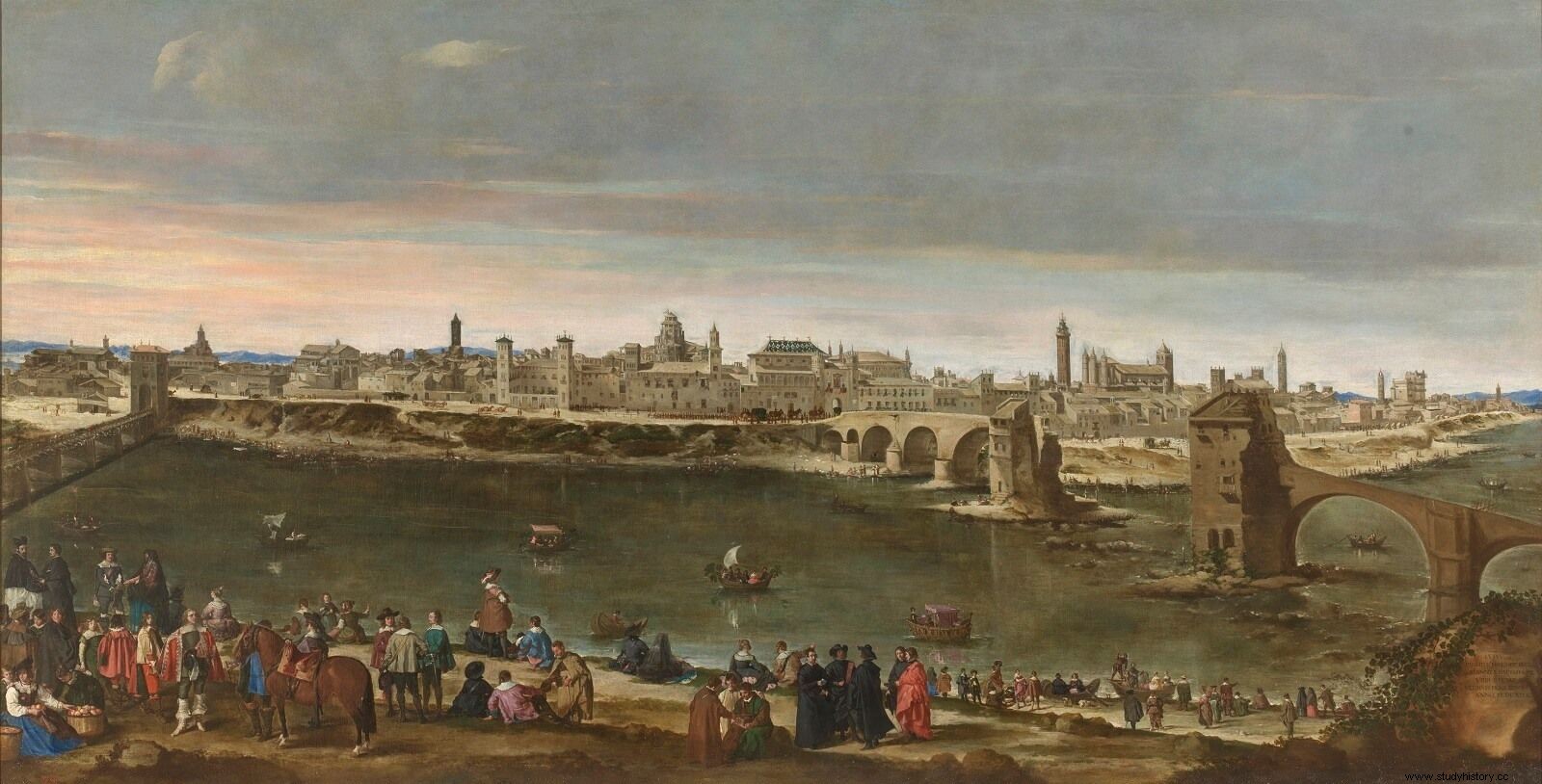
In 1659, a year marked by the signature of the Peace of the Pyrenees , which put an end to a quarter of a century of war between France and Spain, the ambassador of the Republic of Venice in this kingdom, Domenico Zane, wrote a report that revealed the fateful internal situation of the once powerful Austrian monarchy:“if the quality of the forces would have to be argued from the quantity of the states –he asserted–, there is no doubt that they should be considered infinite and immense, but the fact clearly shows the opposite, coming only from the bad administration and the bad disposition of the same forces, like everyone is well known”.[1] The long reign of Philip IV (1621-1665) whose beginning is four hundred years old today, was heading towards a mournful end that had not been foreshadowed by its brilliant beginnings.
Military victories and economic crises in the reign of Felipe IV
Philip IV ascended the throne on March 31, 1621, at the age of sixteen, on the eve of the resumption of the War of Flanders and with the monarchy already plunged into the conflict that It has passed to posterity as the Thirty Years' War. The halcones party, led by Baltasar de Zúñiga, had prevailed after the fall of the Duke of Lerma , architect of a pax hispanica that had not been used to resolve the internal crises of the vast universal monarchy of the Habsburgs. The Spanish armies had proved key in the strengthening of Catholic hegemony in the Holy Empire with the triumph of Montaña Blanca and the occupation of Palatinate (1620-1622), and they would soon reap new successes on the battlefields of the entire globe until the culmination of the Annus mirabilis from 1625 with the conquest of Breda in the Netherlands, the victorious defense of Cadiz against the navies of England and Holland, the restoration of San Salvador de Bahía in Brazil and the expulsion of the Dutch from Puerto Rico, feats of arms on which the favorite of Felipe IV, the Count-Duke of Olivares –“the only master who guides all the wheels of this great clock”[2], in the words of the English-born arbitrist Antonio Sherley– would commission a series of paintings that would adorn the Salón de Reinos of the Palacio del Buen Retiro.
The triumphs did not mask, however, that since the beginning of the 17th century, Castile, the nucleus of the Hispanic monarchy, was undergoing an accelerated crisis in economic and demographic terms. In 1600, Martín González de Cellorigo, lawyer of the Royal Chancery of Valladolid, had indicated the causes of the decline in his Memorial of the necessary and useful policy restoration to the Republic of Spain and its states and of the universal performance of these kingdoms , the first of which was the dependence on American precious metals :“The decadence of Spain comes from disregarding the natural laws that teach us to work, and that from putting wealth in gold and silver, and from failing to follow the true and certain that comes from and is acquired by natural and artificial industry, our republic has come to decay from its flourishing state.”[3] While other European countries, beginning with the rebellious United Provinces and France, witnessed a rapid development of mercantilism, in Castile economic activity was reduced and, consequently, the dependence of the kingdom on foreign trade worsened, which caused gold to and American silver ended up in the hands of enemy states. This was warned by Sancho de Moncada, professor at the University of Toledo, in his Political Restoration of Spain (1619):“the prosperity that is usually the life of other kingdoms is the death of Spain, be it fertility, fleet, remission of alcabala, etc. Because in all the prosperity of Spain the foreigner has a part, and not only sucks it up and takes it away from Spain, but also takes all of it to the enemies”.[4]

Oliveria's reformist project did not adequately address the stated reality , but focused on finding a way to meet the military needs of the monarchy, both money and men. The resulting fiscal and demographic pressure not only aggravated the decline, but also became the breeding ground for the rebellions that marked the 1640s in Catalonia and Portugal, in Naples and Sicily . The turning point was the entry into war against France in 1635 after the overwhelming Spanish-Imperial victory in the battle of Nördlingen (1634) , which forced to increase the number of troops of the armies to unprecedented limits. The resulting crises would hit the Hispanic kingdoms until the peace of 1659, at which time a Councilor of State described to the Duke of Medinaceli the gloomy panorama:“the relations of the Treasury tighten our hearts, the seats turned into letters bring us disappointments protested, the arbitrations have the towns in a hurry, and some of them (pray to God many do not imitate them), resist the lodgings with weapons in their hands”.[5]
The annus horribilis from 1640
The fortune of the Spanish arms was changing in those years. If at first the armies of the Franco-Dutch coalition were stopped at the borders, after 1640 disasters followed . The hardest blows were the loss of Perpignan and the disintegration of the army of Catalonia in 1642, which caused a dent in the spirit of the king. Matías de Novoa, his assistant, wrote that Felipe, “haggard face, head bowed and with secret sighs, was silent without hearing a word of consolation, the whole room silent and in anguish and suspension; and great concern was made for his health, and from then on the most blessed state in which his parents and grandparents left so many kingdoms, so many crowns, so many provinces, Eastern and Western, all in admirable peace and tranquility.” [6] The comparison with his predecessors was inevitable, and Felipe IV was here his first and most severe critic of him:
New victories would come, it is true, especially in the second Annus mirabilis , 1652, which resulted in the recovery of Barcelona and Dunkirk, as well as, in Italy, with the conquest of the famous Casale de Monferrato , before whose walls the conqueror of Breda, Ambrosio Spínola, had expired in 1630. These successes would be followed by the triumphant defense of Pavia in 1655 and the victory of Valenciennes the following year, also led by a royal bastard, Juan José de Austria , son of Felipe IV with the actress María Calderón. However, the English maritime blockade and the victory of Marshal Turenne's army in Las Dunas, in 1658, would finally subdue the Hispanic lion, forced to sue for peace and that would prove impotent, already in the final years of the reign of the old Austria, in their vain attempts to recapture the splinter Portugal.
Philip IV and the arts:the «Golden Age»
That Spain that saw how France was imposing itself in Europe and the United Provinces were doing it in the oceans, Africa and Asia, however, was also the crucible of the arts of the so-called “ Golden age". Poets such as the cultist Góngora and his archenemy, the conceptualist Quevedo, flourished in it. In its corrals, comedies by Lope de Vega, Calderón de la Barca and Tirso de Molina were staged with apparatus and great public attendance. In the plastic arts, names such as Juan Bautista Martínez del Mazo, Vicente Carducho and Eugenio Cajés, among others, shone with their own light, in addition to the most famous of them all, Diego Velázquez , whose brushes portrayed the splendor of the king and his court, with which they contrast, yes, the realities described in works such as La vida del buscón , by Quevedo , or the anonymous The life and facts of Estebanillo González, a man of good humor , that is, the picaresque that prevailed in the lower strata of the Spanish society of the century.

The image of Felipe IV that has remained in the The popular imagination is that of a "stunned king", but the reality is that Austria was not only fully aware of its role as monarch and its responsibility in the historical evolution of the monarchy, but, at the same time, it was a cultivated man with clear intellectual concerns . As Alfredo Alvar Ezquerra points out in his biography of the monarch:“he reasoned about the theory of history; on the education of princes; about morals, ethics and politics.”[8] A large number of texts came out of the monarch's pen, including the Spanish translation of the History of Italy of Guicciardini, and it is that the king spoke, in addition to his mother tongue, French, Italian and Latin . He also left us his enormous correspondence with Sister María Jesús de Ágreda, with whom he exchanged a series of letters for more than twenty years that reveal the most intimate dimension of a man tortured by his carnal sins and by the loneliness resulting from premature loss. of your loved ones. In the end, Philip IV stands as a symbol of Spain in the 17th century, with his lights and shadows; bright as well as gloomy.
Notes
[1] Antonio Zani's relationship when he returned to Spain from his embassy in Venice , 1659, MSS/13627, BNE, f. 37.
[2] Quoted in Elliott, J. H. (1990):The Count-Duke of Olivares:the politician in an age of decadence . Barcelona:Critique, p. 235.
[3] González de Cellorgio, M. de (1991):Memorial of the necessary and useful policy restoration to the Republic of Spain and its states and performance universal of these kingdoms (1600) . Madrid:Ibero-American Cooperation Institute, p. 12.
[4] Moncada, S. de (1746):Political restoration of Spain . Madrid:Juan de Zúñiga, p. 9.
[5] Letter written from Madrid to the Duke of Medina-Coeli, in Events of the years 1659 and 1660 , Mss/2387, BNE, f. 53.
[6] Novoa, M. de (1886):Historia de Felipe IV , in Collection of unpublished documents for the history of Spain , you LXXXVI. Madrid, Royal Academy of History, pp. 67-68.
[7] Op. quote ., p. 68.
[8] Alvar Ezquerra, A. (2018). Philip IV the Great . Madrid:The Sphere of Books, p. 18.
